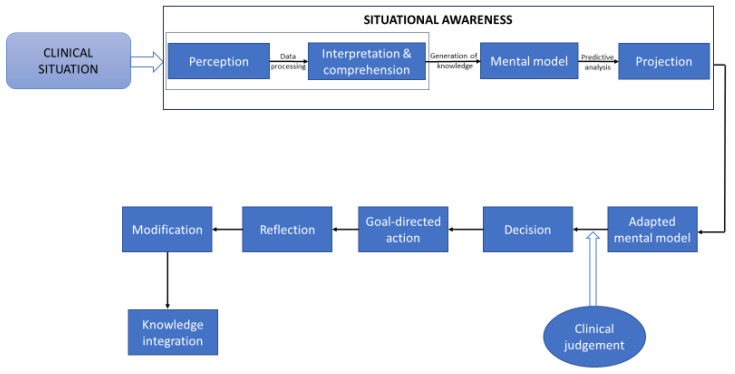Figure 1.
A simplified diagram showing the cognitive information processing pathway that is used in the development of situational awareness, decision making, and clinical operations. The ‘perception’ component of this pathway captures the situational characteristics obtained from the patient’s history, physical examinations, and diagnostic test results. The interpretation and comprehension of the perceived information are determined by using pattern recognition processes, by using the clinician’s cognitive skills, memory capacity, and domain-specific competence, and by considering expert and second opinions. All of these factors are essential for constructing situational mental models, and comprehensive knowledge of the situational constraints enables the formulation of differential and working diagnoses, as well as the performance of adaptive goal-oriented activities [6]. The ‘projection’ component deals with situational predictive analyses and with the search for additional situation-related and relevant scientific information, with the consideration of alternative treatment options, and with forecasting treatment outcomes and ongoing changes in situational eventualities [6]. Based on the acquired situational awareness and adapted ‘mental model’, a decision is made, and it is followed by the execution of the planned goal-directed tasks. Subsequently, the process of reflection in relation to the operational plans and tasks is conducted. Finally, the newly acquired knowledge is integrated within pre-determined mental models [7,9,15,22].

